Zimmerman J. 2016. California Desert: President Obama designates 3 new national monuments. The Press Enterprise Available from: http://www.pe.com/articles/national-794107-mojave-act.html
In February of this year, Barack Obama created three new national monuments under the Antiquities Act to protect the California desert. This includes the Mojave Trails, Sand to Snow, and Castle Mountains and covers a total area of nearly 1.8 million acres (Zimmerman 2016).
The Antiquities act was an act passed by the US congress and signed into law by president Theodore Roosevelt in 1906. This act gives the president of the US the authority to create national monuments from public lands to protect significant natural, cultural or scientific features without going through congress, such as the process of creating National parks (National Parks Service 2016).
The California desert is a unique area, which includes high alpine mountains, prehistoric lava flows, steep canyons, grasslands, forests, wetlands, and sand dunes. These areas are home to a wide variety of plant and animal species including 2450 species of plants, and many animals including: bighorn sheep, tortoises, fringe-toed lizards and more than 250 bird species (Hass 2014; WWF 2016)
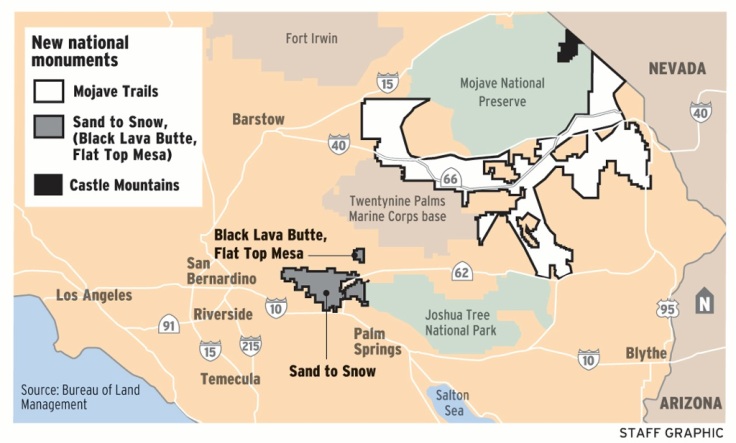
Castle Mountain is a 20,000-acre area that was the missing piece of the most northern part of the Mojave National Reserve up to the Nevada border. This area encompasses native desert grasslands that were once inhabited by pronghorn antelope as well as Joshua tree, Pinyon Pine and Juniper forests and is considered a hotspot for desert plant diversity (Zimmerman 2016). Note: Castle Mountain shown by the black area in top right corner of figure 1.
The Mojave Trails will preserve 1.6 million acres and serves as an important connection between the existing Joshua Tree National Park and the Mojave National Preserve (Zimmerman 2016).

Sand to Snow includes Mount San Gorgonio, Southern California’s tallest peak and will act as a protected corridor between the San Bernardino Mountains to Joshua Tree National Park. This area includes alpine peaks, conifer forest, pinyon forests, Joshua tree woodland, the headwaters of the Whitewater River, wetlands, and desert landscapes (Zimmerman 2016).
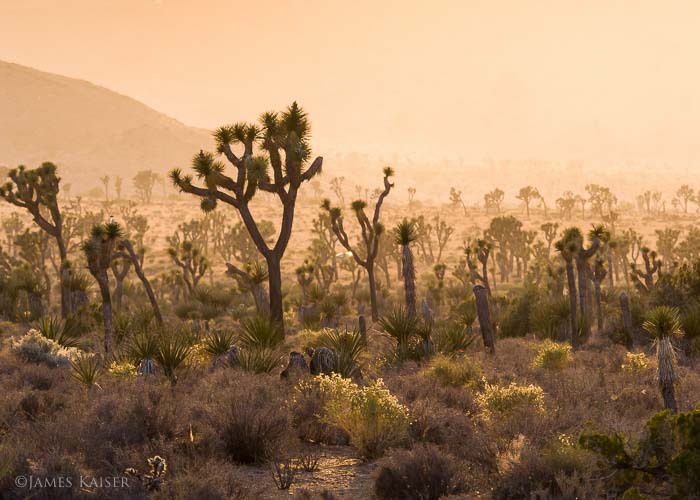
The new designation of these areas has caused some controversy with some individuals complaining about the lack of public input and some saying it is a misuse of economically valuable land (Eilperin 2016; Zimmerman 2016). However, the area provides protection of an incredibly specious region with a unique variety of landscapes. It also provides an increased connectivity between protected areas and thereby reducing habitat fragmentation and hopefully increasing gene flow. It may even be possible to reintroduce pronghorn antelope into their native habitat. Overall this is a huge success towards conservation in the area. I would love to go here one day, and am happy that it will remain undeveloped and protected.
Words: 399
References:
Eilperin J. 2016. With 3 new monuments Obama creates wolr’s second-largest desert preserve. The Washington Post. Available from: https://www.washingtonpost.com/news/energy-environment/wp/2016/02/12/with-3-new-monuments-obama-creates-worlds-second-largest-desert-preserve/
Hass B. editor. 2014. Fremontia. Journal of the California Native Plant Society. 42:1. Available from: https://www.cnps.org/cnps/publications/fremontia/FremontiaV42.1.pdf
National Parks Service. 2016. American Antiquities Act of 1906. Available from: https://www.nps.gov/history/local-law/anti1906.htm
WWF. 2016. Deserts and Xeric Shurblands: Mojave Desert. Available from: http://www.worldwildlife.org/ecoregions/na1308
Zimmerman J. 2016. California Desert: President Obama designates 3 new national monuments. The Press Enterprise Available from: http://www.pe.com/articles/national-794107-mojave-act.html
Image source:
https://ecopostblog.wordpress.com/2013/03/10/california-series-3-deserts/


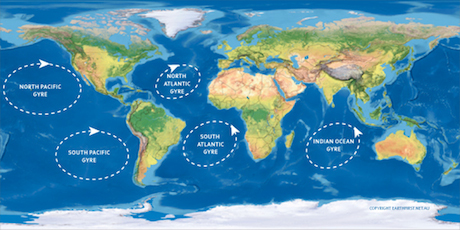


 Irrawaddy dolphins are small small greyish-blue, snub-nosed dolphins that live in both marine, brackish and freshwater environments of South east Asia. They typically inhabit rivers or shallow, near-shore waters, estuaries, and semi-enclosed water bodies near mangrove forests [WWF 2016]. One of the f
Irrawaddy dolphins are small small greyish-blue, snub-nosed dolphins that live in both marine, brackish and freshwater environments of South east Asia. They typically inhabit rivers or shallow, near-shore waters, estuaries, and semi-enclosed water bodies near mangrove forests [WWF 2016]. One of the f
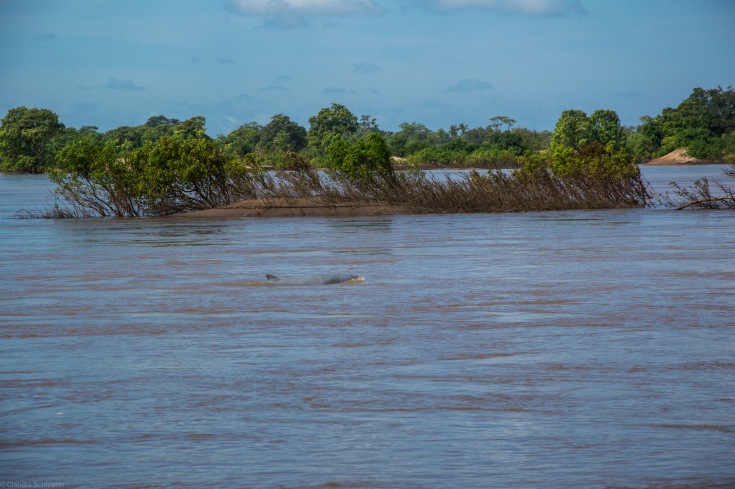


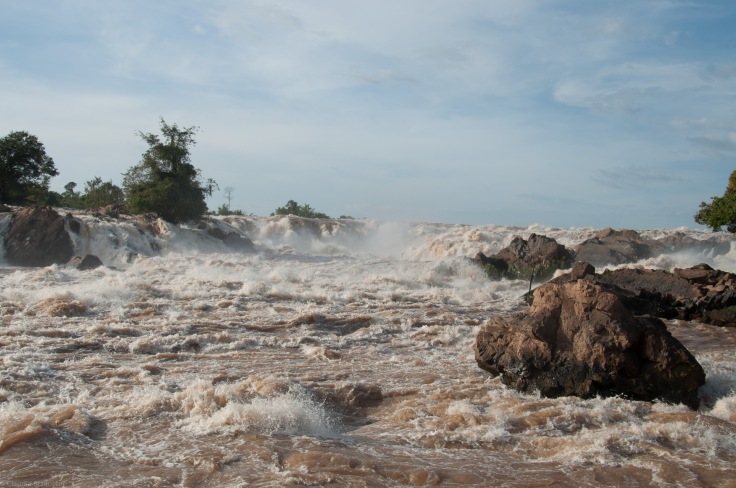







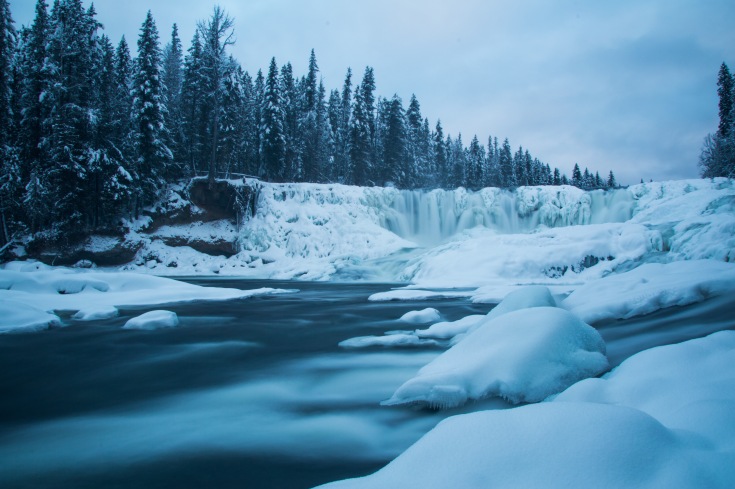 Climb the mountains and get their good tidings. Nature’s peace will flow into you as sunshine flows into trees. The winds will blow their own freshness into you, and the storms their energy, while cares will drop away from you like the leaves of Autumn.
Climb the mountains and get their good tidings. Nature’s peace will flow into you as sunshine flows into trees. The winds will blow their own freshness into you, and the storms their energy, while cares will drop away from you like the leaves of Autumn.